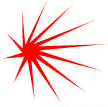The newest breed of seating systems keeps kid passengers more secure and makes installation a snap
By Jayne O'Donnell
http://www.clubmom.com
For a new mom with just one infant, I take more than my share of child safety seats in and out of cars. That's because I test drive at least one new car or truck every week, and little Cate almost always comes along for the ride.
So it stands to reason that I'm excited about the new child seating system known as "LATCH" (short for Lower Anchors and Tethers for Children). LATCH has two components: a top-tether anchor for use with forward-facing seats and easy-lock lower anchor points for use with all child safety seats. LATCH is a blessing for anyone who's ever struggled with car seat belts to install a child safety seat. (And if you're really getting the child seat snug enough, you're doing some wrestling.) This new system eliminates the need to even touch the car's belts when you're putting in a child seat. The lower anchor portion of the LATCH system will be required in all new cars, minivans, and light trucks beginning September 1, 2002. But it has already shown up in many 2001 cars and trucks, including the Ford Escape sport-utility vehicle, General Motors' minivans, the Nissan Frontier pickup truck, the Infiniti G20 sedan, and Chrysler's redesigned minivans.
How LATCH Works
In vehicles equipped with lower anchors, safety seat anchors are tucked away in the space where the seat back meets the seat bottom (where the seat belts come out). New child seatscurrently available from Fisher-Price and Cosco, and soon to be out from Britaxhave special belts or hard attachment points with hooks that connect to the anchors. Once the seat is hooked in, you simply tighten the child-seat belts according to directions and you should be ready to roll with a seat that's sure to be properly secured. If you have an older car, the new child seats can also be installed via the regular seat belts. By September 2002, all child safety seats will also have to have two lower attachments that connect to a vehicle's LATCH anchorage points.
Even if your vehicle isn't equipped with the lower anchor, car seat tether straps attached to anchor tether points in the vehicle can improve child-seat security. As of September 1, 2000, all new cars, minivans, and trucks were required to have anchors for use with child-seat tether straps. These anchors are often found on the shelf behind the back seat of a car, or on the seat back or floor of a van or SUV. When attached to the tether strap found on most new child seats, these anchors help reduce head injury to children by decreasing the distance your child's head moves forward in a crash. Older-model cars can be retrofitted with tether anchor attachments, so contact your dealer. (Some older safety seats can also be fitted with the tether, so contact the manufacturer.)
Room for Improvement
Alas, nothing is ever truly easy when it comes to protecting kids in cars. I have two nits about the new LATCH system. First, because the government requires automakers to have the lower anchors in two rear seating positions, you usually get them in the seats next to the doors and not the safest center seat. Phil Haseltine, president of the Automotive Coalition for Traffic Safety and chairman of the advisory panel that recommended the system, says that's because many rear seats aren't big enough to accommodate two full-size child seats right next to each other. (In that case, maybe a third center-seat should be mandatory!) However, the top tether anchors are required in three positions.
Second complaint: On most cars I've tested with LATCH, it's much easier to hook the seats in than to unhook them. This should be less of a problem when child-seat makers begin selling special LATCH seats with hard lower attachment points instead of standard seats with LATCH mini-belts. Then again, most people won't be taking their child safety seats in and out of cars as often as I do.
ClubMom's AutoPro, Jayne O'Donnell, is a Washington, D.C.-based reporter (and new mom!) whose automotive expertise and investigative reporting skills have helped break some of the biggest auto-safety stories of the past several years.
Copyright © 1999-2003 ClubMom, Inc. All rights reserved.



